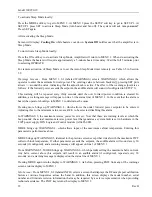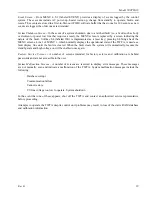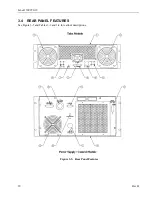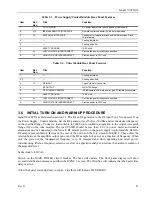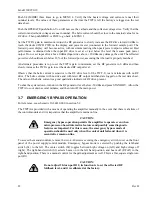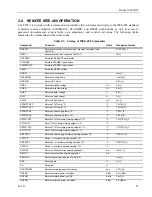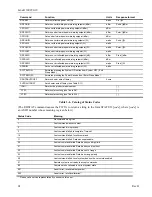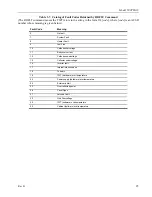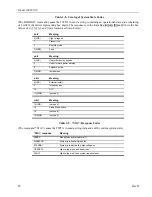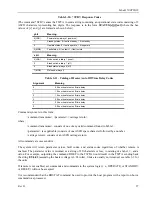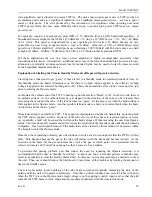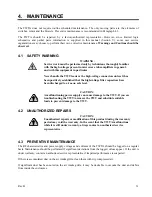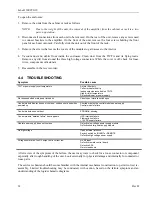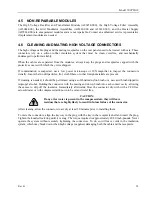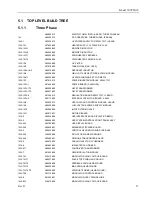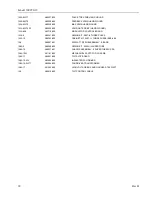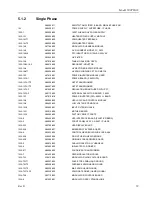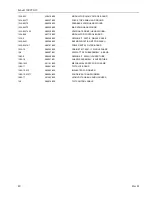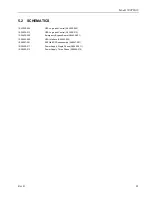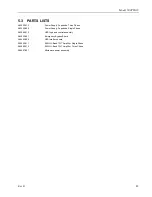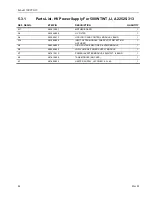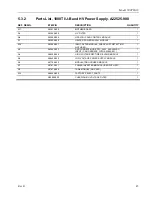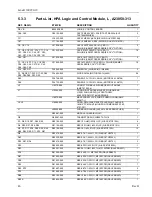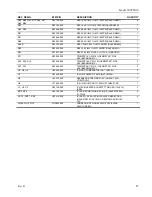
Model 500T8G18
32
Rev B
To open the enclosure:
1.
Remove the units from the cabinet or rack as follows:
NOTE:
Due to the weight of the unit, the removal of the amplifier from the cabinet or rack is a two
person operation.
2.
Disconnect all connections from each unit to be removed. On the rear of the unit, remove any screws used
to connect brackets to the amplifier. On the front of the unit, remove the four screws holding the front
panel of each unit onto rack. Carefully slide the unit out of the front of the rack.
3.
Remove the screws that secure the covers of the modules to gain access to the interior.
4.
Vacuum dust and debris from inside the enclosure. Clean dust from the TWTA and its flying leads.
Remove any dirt from around the three high voltage connectors. While the cover is off, check for loose
wires, components or fasteners.
5.
Reassemble in the reverse order.
4.4 TROUBLESHOOTING
Symptom Possible
cause
TWT or power supply overtemperature
Air inlet filter dirty
Collector heat sink dirty
Inadequate clearance behind TWTA
High air inlet temperature
Defective blower or power supply
No response when main power turned on
Panel open interlock switch open
Control module display does not come up; unit does not beep when
powered up
Shorted or defective control module power supply
Control module failure
Control module does not boot
EPROM(s) missing.
Control module "datalink failure" error appears
HPA interface failure.
Fiberoptic link failure
+15 VDC supply failure
Heater power supply does not come up
Defective low voltage power supply module
Defective heater power supply module
No high voltage
Open external interlock
Keylock switch on INHIBIT or REMOTE
Defective high voltage power supply.
Voltages normal, but no RF output, helix current low
No RF input
Defective remote control board
Defective SSA
Gain turned down
After review of the symptoms of the failure, the user may want to check for a loose connector or component
especially after rough handling of the unit. Look externally for physical damage and internally for unmated or
loose parts.
The service technician should become familiar with the internal mechanical construction to permit correct re-
assembly. Limited troubleshooting may be conducted, with caution, based on the failure symptom and an
understanding of the logic/schematic diagrams.
Summary of Contents for 10012342
Page 2: ......
Page 4: ......
Page 8: ......
Page 12: ......
Page 20: ......
Page 44: ...Model 500T8G18 30 Rev B ...
Page 48: ...Model 500T8G18 34 Rev B ...
Page 50: ...Model 500T8G18 36 Rev B ...
Page 56: ...Model 500T8G18 42 Rev B ...
Page 70: ...Model 500T8G18 56 Rev B ...
Page 72: ......

